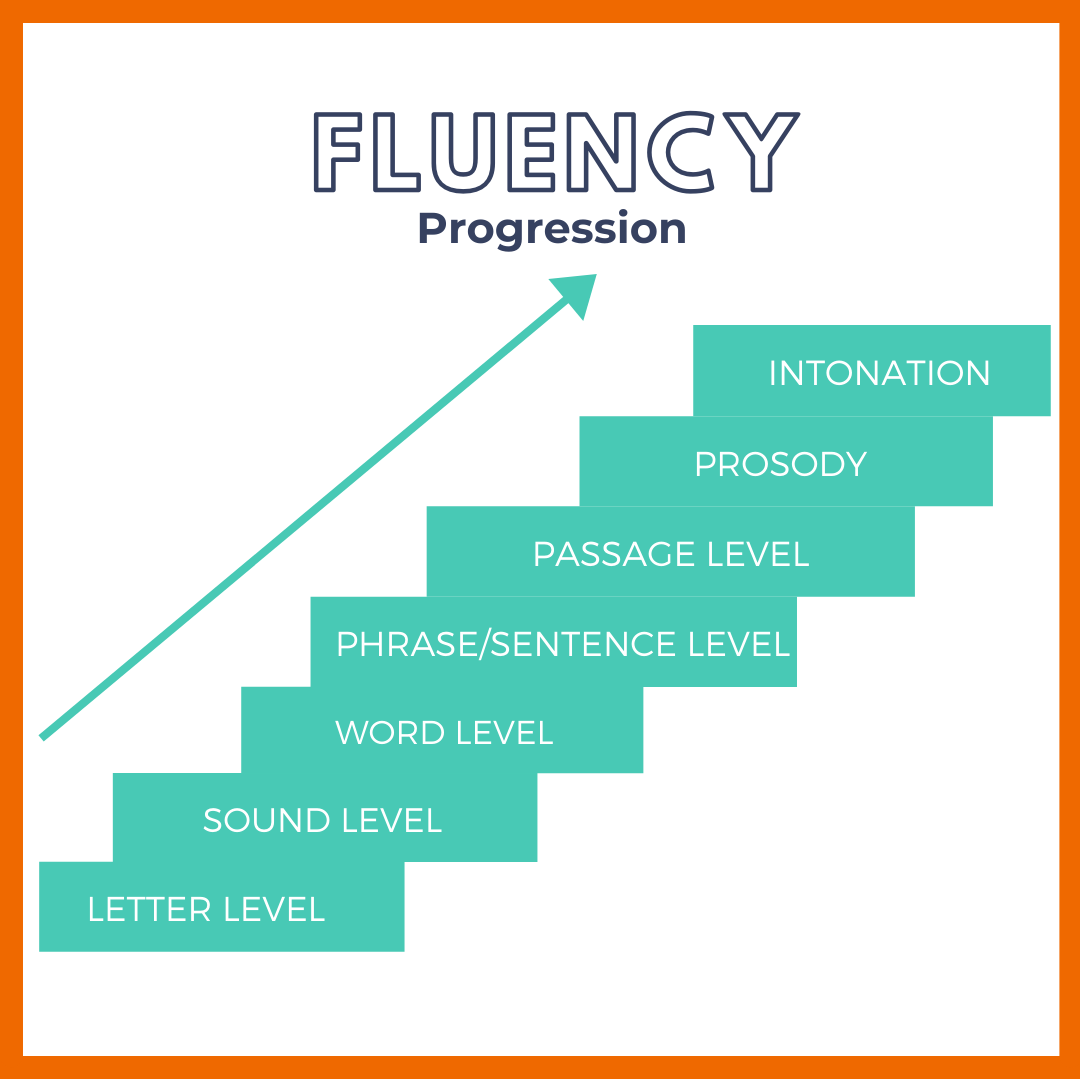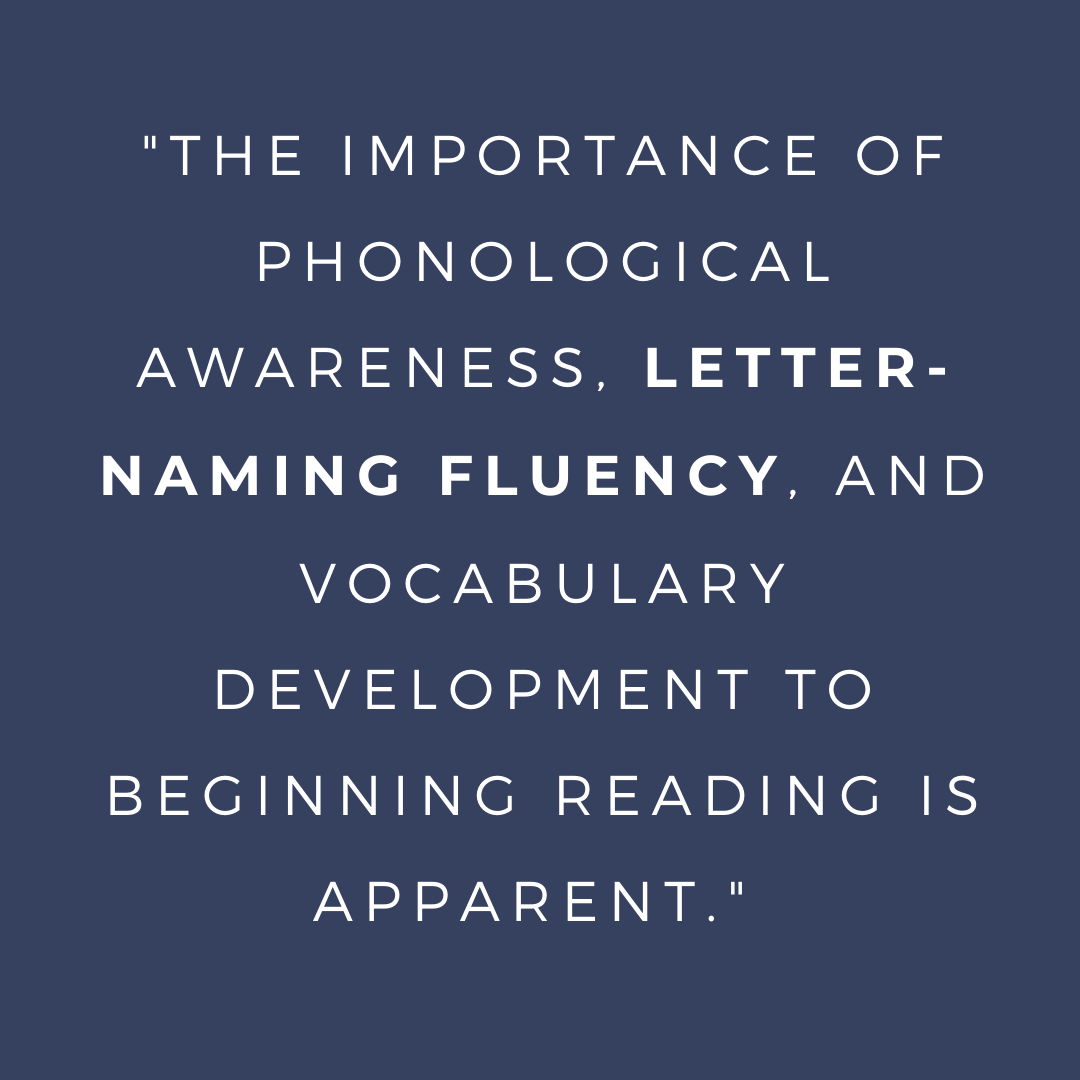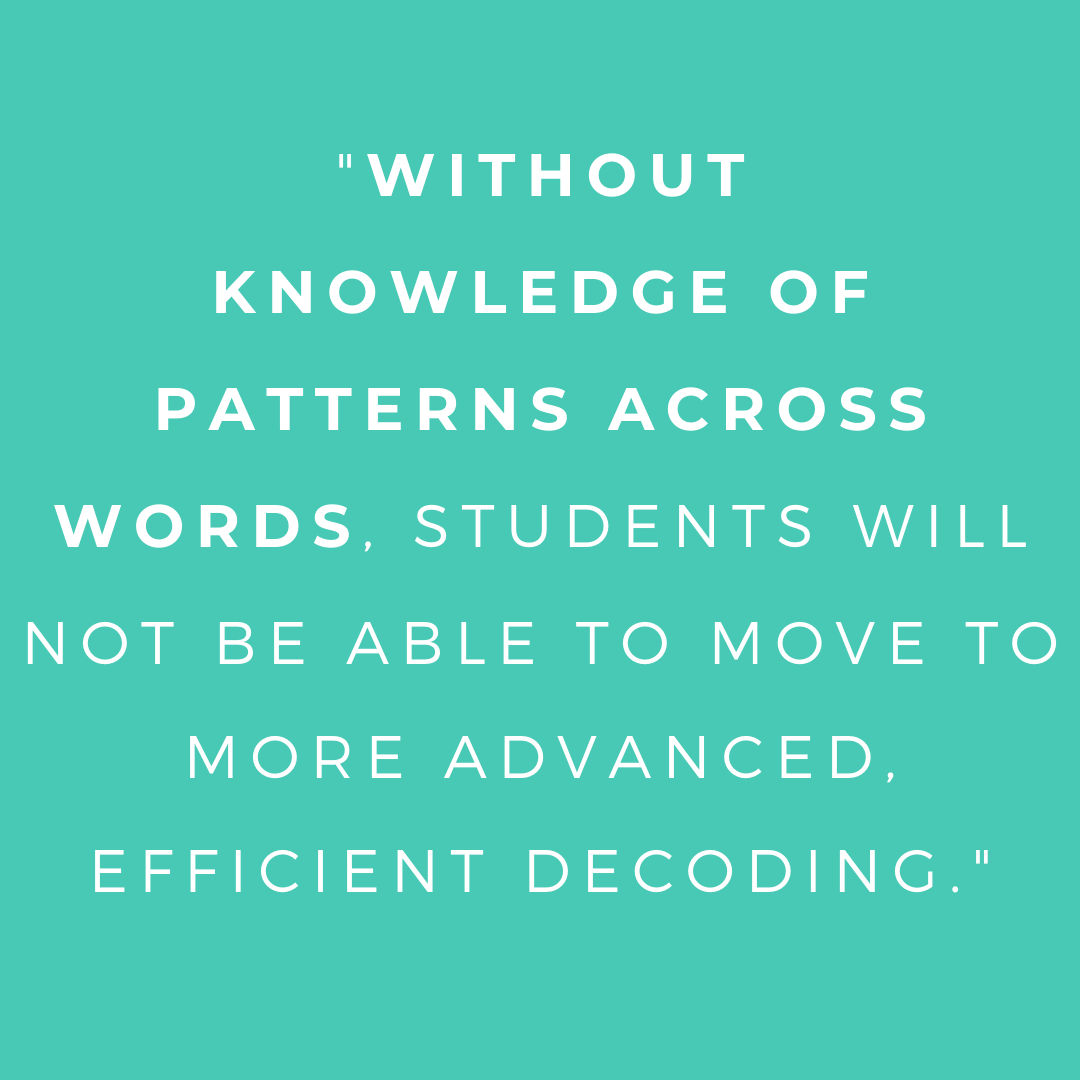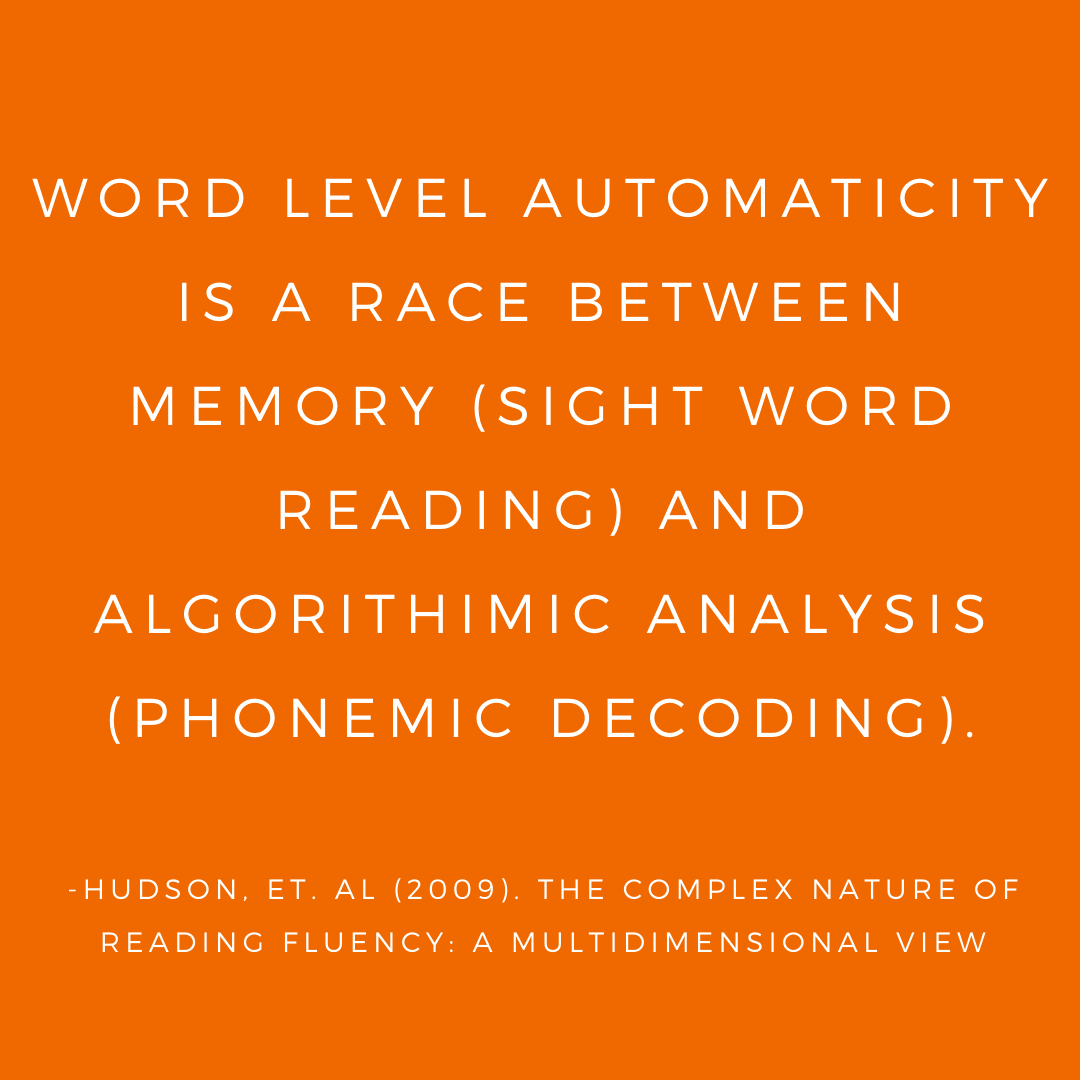How to Teach Reading Fluency using a Research-Based Approach
Hi friend,
When we think about reading intervention, reading fluency is definitely one of the first things that come to mind. Today, we are breaking down exactly what reading fluency is and the ACTUAL skills we should be targeting.
First things first -
What is reading fluency?
We often hear people referring to fluency as a child’s reading speed. While fluency does relate to the speed at which a child is reading, it is so much more than that and we need to be EXTREMELY careful as to how we present that to students.
One of the biggest mistakes we can make when teaching fluency, is relying solely on increasing a student’s Words Per Minute and encouraging them to read quickly. Instead, students should be reading at a pace that sounds like spoken language (I tell my students to make it sound like a conversation) and it needs to be accurate. Our end goal should be something that sounds natural - not just reading quickly.
Fluency is a critical component of reading instruction because it shows an ability to read text accurately. Without accurate reading (including accurate decoding, reading to the punctuation, correct intonation, etc.) students will not be able to pull meaning from the text consistently.
There are 7 Steps to a SMARTER Research-Based Instruction Framework (we use the acronym SMARTER to help remember each of the key components!)
1 - Systematic Instruction
We should be teaching fluency skills in a progression.
The progression is the sequence or order in which you teach specific skills. In research-based instruction, skills build on one another and progress from the most basic concepts to the most complex concepts.
In fluency, this looks like starting at the letter level (can students name their letters), moving to the sound level (can they produce a letter’s sound), and then up through the word, phrase, sentence, paragraph, and passage levels. Other skills like prosody and intonation are also included as they will support our students’ overall understanding of what they are reading.
2 - Multisensory Instruction
Fluency instruction should incorporate multiple senses wherever possible!
We can incorporate multisensory fluency instruction in a lot of different ways.
First - students can visually see how their work breaks down. With letters, you can use different dots/magnets to outline how many sounds a letter makes. In sentences, breaking them into the subject, predicate, and adverbial sections can help students see how to naturally break a sentence when reading.
Second - students can engage their tactile sense by swiping over magnets (that correspond with each word) to help them see how they can flow through the sentence and read it “smoothly.”
3 - Applied Instruction
Fluency instruction should be applied at all levels!
Fluency is not reserved for high-level passages! Even our youngest students can practice letter-naming fluency and begin to read words, sentences, and phrases where their target phonogram/sound is present. If they come across a word they don’t know - that is a great metacognitive exercise (see if they can identify they don’t know it) and you can provide it for them!
Likewise - older students should not only be practicing fluency at the passage level. Letter, sound, and word fluency will still be important to ensure that students are tying all of their skills together.
Again - make sure that fluency practice encompasses accuracy as much (if not more!) as it does speed.
4 - Research Behind the Instruction
Research supports teaching fluency across a continuum of skills beginning at the letter-recognition level and working up to the passage level.
Significant research has been conducted to look at each of the underlying skills necessary to develop reading fluency. And what becomes clear is that reading fluency isn’t a single skill to be developed but rather a set of complex processing skills that must all come together.
At the most basic level, we need to look at students’ ability to recognize letters, in order to begin tying sounds to individual letters and then onto letter patterns - students must be able to recognize letters with automaticity. That pattern recognition can then be used to recognize more complex patterns in the English language. For example, we must be able to recognize the letter “t” before we can recognize that “t” says /t/ and “th” says /th/ and “tch” says /ch/, and “tion” says /shun/. So we begin at the letter level in order to build up to the sound level in order to support more advanced efficient decoding.
Then, we use sound level recognition to build word level reading fluency. Most often, word level reading fluency is referred to as “sight word reading,” meaning that ‘‘sight of the written word activates its spelling, pronunciation, and meaning immediately in memory’’ (Ehri, 1998, p. 8).
In order to build passage level fluency, the majority of words need to be identified by the sight of the word as opposed to using an “analytic phonetic decoding strategy.” We want students to use an analytic decoding strategy UNTIL they can recognize these words by sight, and then we want them to use memory activation as it is a more efficient process.
Finally, we need students to be able to read at the passage level in a way that mirrors spoken language. The brain was designed to interpret spoken language and therefore if our ability to read (either out loud or subvocally) can imitate spoken language our ability to comprehend will be improved. This requires prosody and intonation that helps words flow naturally as opposed to having robotic and choppy word level identification.
Hudson, Roxanne & Pullen, Paige & Lane, Holly & Torgesen, Joseph. (2009). The Complex Nature of Reading Fluency: A Multidimensional View. Reading & Writing Quarterly. 25. 4-32. 10.1080/10573560802491208.5 - Targeted Instruction
You target specific Fluency skills by understanding where students have strengths and where the breakdowns are occurring.
When teaching fluency, it is important to recognize if your student is breaking down at the sound, word, sentence, or paragraph/passage level and target your instruction accordingly. If a student struggles to remember the sounds of different phonograms, they will undoubtedly struggle to apply that knowledge at the word level.
This may get masked at the passage level if your student uses context or visual clues to guess at words (this is a common compensatory strategy we see struggling readers using!) so it is important to assess each child and know where their breakdowns are occurring and then target instruction accordingly.
6 - Explicit Instruction
The biggest hallmark of research-based instruction is that the instruction must be taught explicitly, meaning that we don’t assume students have prior knowledge of foundational concepts just because of their age or perceived ability! It is important that we give assessments and show ALL students - no matter what age, how fluency comes together at ALL of the following levels.
Explicit Fluency Skills to Support Reading
Include letter & sound fluency, word fluency, phrase/sentence fluency, AND passage fluency at ALL levels.
Yes - this means you may need to differentiate/scaffold your instruction. Your youngest students may not be ready to read a full passage. That is okay! We still recommend showing them a passage and having them read what they can to help build their skills & ability to generalize what they are learning.
As we’re building fluency at each of these levels - we also want to be…
targeting skills that help our reading sound like spoken language.
These skills include things like prosody and intonation.
7 - Realistic Instruction
Do what you can with what you have, where you are.
Now obviously there is A LOT that goes into research-based instruction for fluency but it doesn’t have to be hard! Always remember that YOU know your students (when it comes to their literacy skills) best! This means that YOU have the autonomy & power to switch things up to make them more realistic for students (we love using games to do this because they can make seemingly challenging activities more approachable for students).
If you are looking for activities that help to target the fluency and comprehension skills you’re working on with your students, then check out the 5CCL Activity Library. This collection of resources provides hundreds of activities that are research-based and target all 5 core components of literacy (+ writing)! To learn more, use the button below.



















